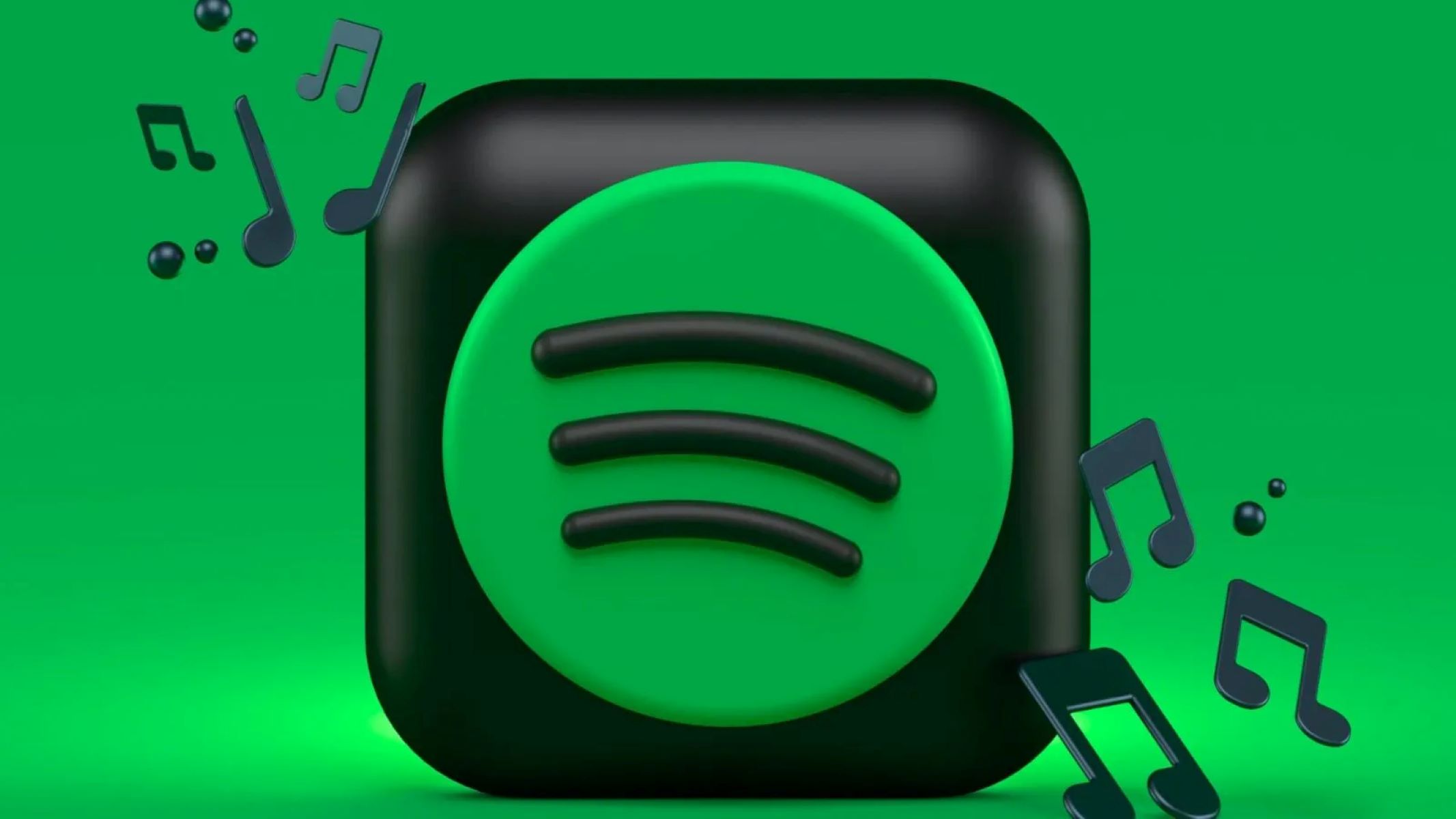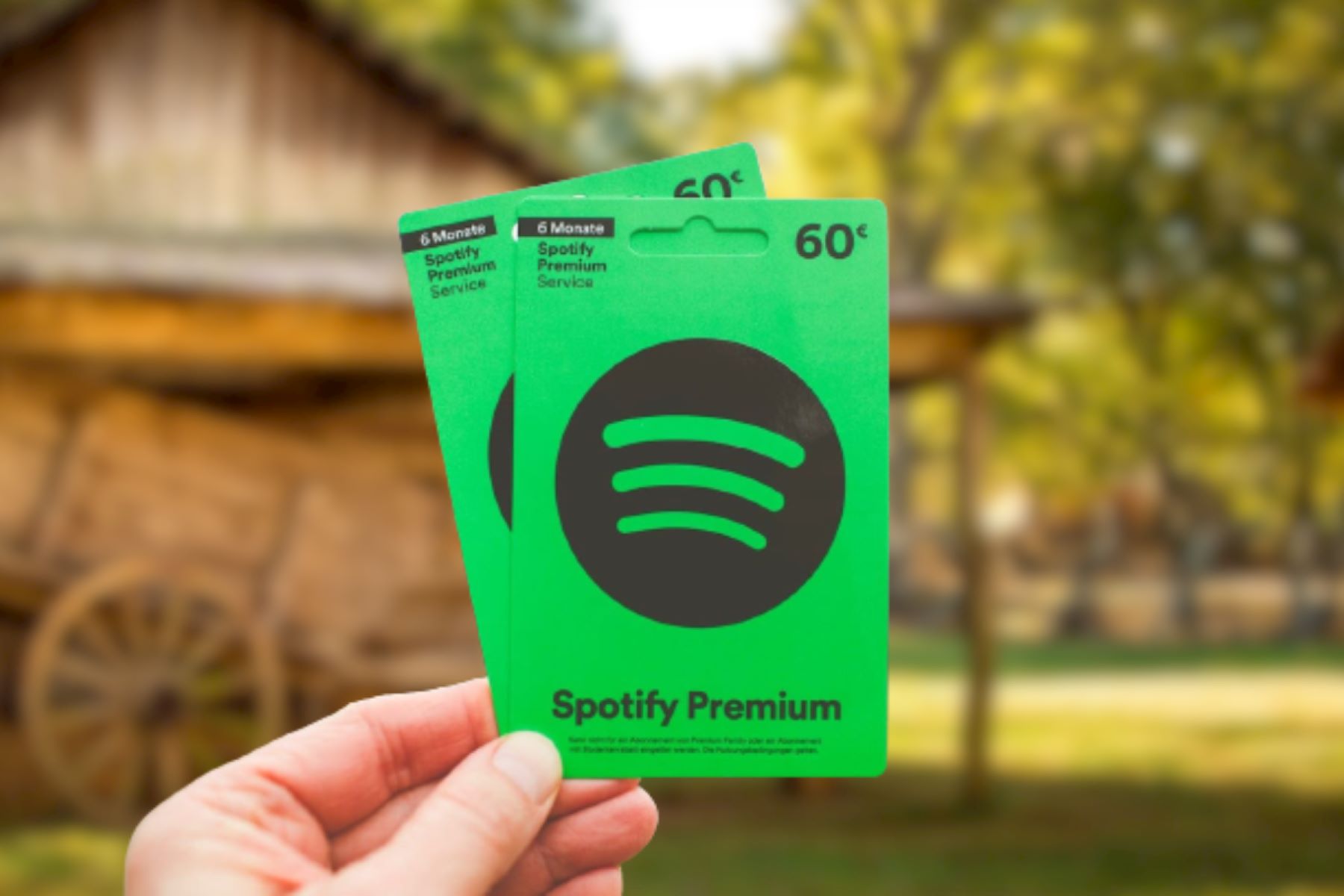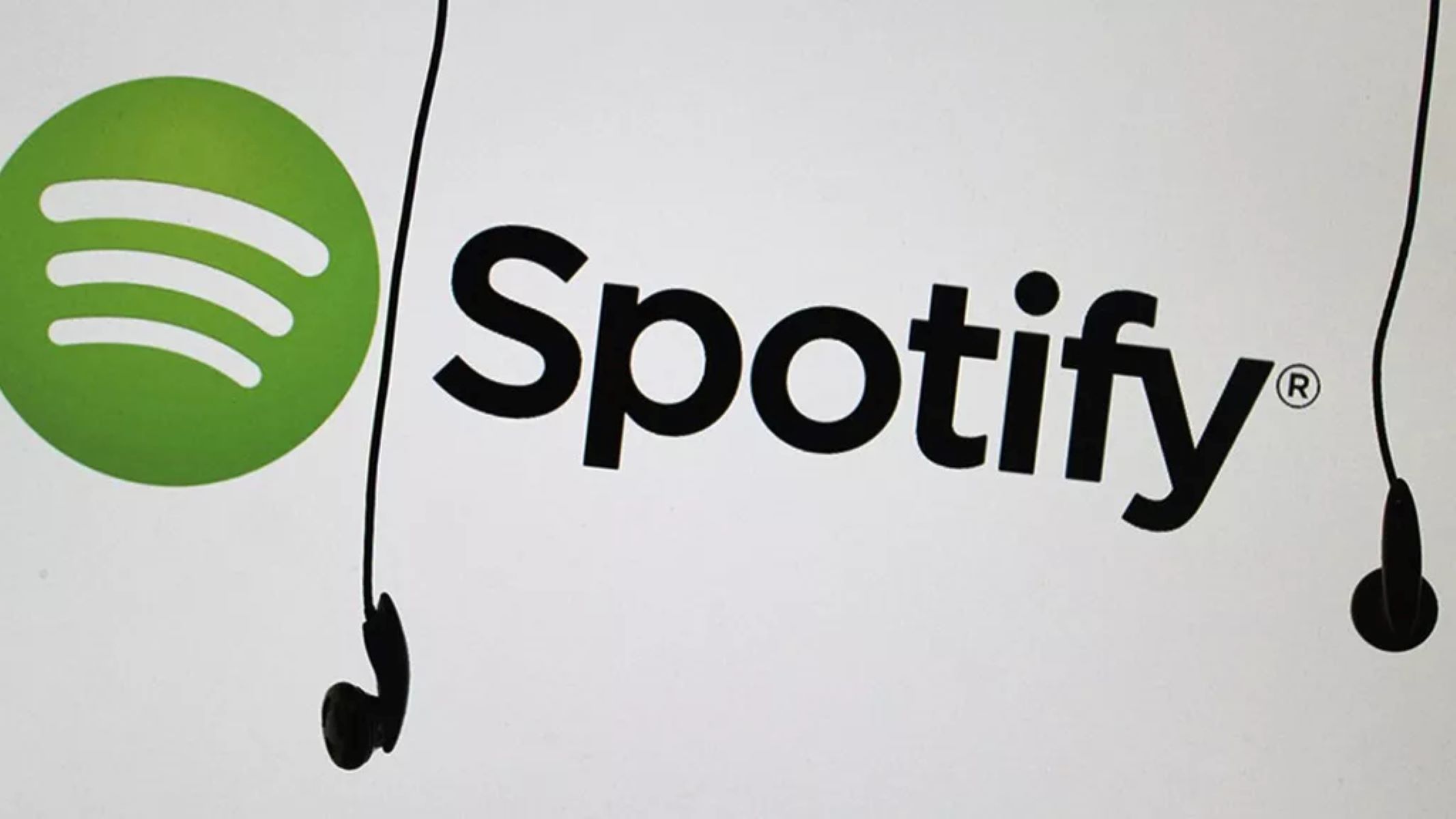Introduction
Welcome to the world of music streaming, where talented artists can reach millions of listeners with just a few clicks. With platforms like Spotify gaining immense popularity, it has become vital for musicians to understand and leverage the metrics that measure their success on these platforms.
One such metric that holds significant importance on Spotify is the number of Monthly Listeners. This metric reflects the number of unique listeners that tune in to an artist’s music within a given month. It serves as a key indicator of an artist’s popularity and the reach of their music.
As an artist, having a high number of Monthly Listeners can provide numerous benefits. It not only boosts your credibility but also opens doors to potential collaborations, sponsorships, and performance opportunities. Additionally, it increases the likelihood of your music being discovered by listeners who are searching for new sounds.
However, the question arises: what is considered a “good” number of Monthly Listeners on Spotify? Is there a certain threshold that signifies success? The answer to this is not straightforward, as the definition of a good number can vary based on several factors.
In this article, we will explore the concept of Monthly Listeners on Spotify and delve into the factors that influence the perception of a good number. We will also discuss how Monthly Listeners can be compared to other artists and the importance of engagement and follower growth in the quest for musical success. Lastly, we will provide effective strategies to increase your Monthly Listeners organically.
So, if you’re an aspiring musician looking to understand the significance of Monthly Listeners on Spotify and how to leverage this metric to your advantage, read on!
What are Monthly Listeners on Spotify?
Monthly Listeners on Spotify refer to the unique number of people who stream an artist’s music within a given month. It represents the reach and popularity of an artist’s music on the platform. Each time a listener plays a song by an artist, they contribute to the artist’s Monthly Listener count.
Spotify calculates Monthly Listeners by tracking the number of unique listeners who have streamed an artist’s tracks for at least 30 seconds during the month. The count includes listeners from all over the world and is updated regularly, providing artists with real-time data about their audience reach.
It is important to note that a Monthly Listener is not the same as a follower. While followers specifically choose to follow an artist’s profile and receive updates about their music, Monthly Listeners represent a broader audience who may have discovered the artist’s music through curated playlists, recommendations, or direct searches.
Monthly Listeners are displayed prominently on an artist’s Spotify profile, giving listeners an idea of their popularity and widespread appeal. This metric helps listeners gauge the overall reach and impact of an artist, providing valuable insights into their music’s growing popularity or decline in the streaming world.
Artists can also access more detailed data about their Monthly Listeners, such as their location, age range, and gender, through Spotify for Artists or other analytics tools. This information can help artists better understand their audience demographics and tailor their marketing and promotional strategies accordingly.
Overall, Monthly Listeners on Spotify act as a barometer of an artist’s popularity and success on the platform. It allows artists to track their reach and engagement, identify trends, and make informed decisions about their music career based on the insights gained from this metric.
Why are Monthly Listeners Important?
Monthly Listeners on Spotify play a crucial role in an artist’s success and overall music career. Here are some reasons why this metric holds significant importance:
1. Popularity and Credibility: A high number of Monthly Listeners signals that an artist is gaining popularity and resonating with a wide audience. This can enhance their credibility as a musician and attract the attention of industry professionals, influencers, and fans who are looking for new and trending music to listen to.
2. Discoverability: On Spotify, users often discover new music through curated playlists, personalized recommendations, and search queries. Having a substantial number of Monthly Listeners increases the chances of an artist’s music appearing in these algorithm-driven features, leading to more exposure and potential new fans.
3. Industry Recognition: A high number of Monthly Listeners can capture the attention of record labels, talent scouts, and music industry professionals who are constantly searching for promising artists to sign or collaborate with. It serves as a strong validation of an artist’s talent and potential for success.
4. Performance Opportunities: Music venues, festivals, and event organizers often consider an artist’s Monthly Listeners count when selecting acts for their lineup. Higher numbers imply a larger fan base and increased chances of drawing in a crowd, making it more likely for an artist to secure live performance opportunities.
5. Revenue Generation: Spotify offers artists the opportunity to monetize their music through royalty payments. The more Monthly Listeners an artist has, the higher the potential for their music to generate streams, which in turn leads to increased revenue through streaming royalties.
6. Competitive Edge: In a highly competitive music industry, having a strong base of Monthly Listeners gives artists an edge over their competitors. It showcases their popularity and demonstrates that their music is resonating with a significant audience, potentially leading to more opportunities for growth and success.
Overall, Monthly Listeners on Spotify provide valuable insights into an artist’s reach, engagement, and potential for success. It not only helps artists gauge their popularity but also serves as a powerful tool for industry recognition, discoverability, revenue generation, and securing performance opportunities.
Is there a “Good” Number of Monthly Listeners?
When it comes to determining what constitutes a “good” number of Monthly Listeners on Spotify, there is no one-size-fits-all answer. The definition of a good number can vary based on several factors, including genre, stage of the artist’s career, and the industry landscape.
For some emerging artists, a few thousand Monthly Listeners may be considered a significant achievement, as it indicates that their music is gaining traction and resonating with a niche audience. On the other hand, established artists with a larger fan base might have tens or even hundreds of thousands of Monthly Listeners.
It’s crucial to avoid comparing Monthly Listener numbers directly between different artists, as genres and target audiences vary greatly. For example, an artist in a niche or underground genre may have a smaller number of Monthly Listeners compared to a mainstream pop artist.
Rather than focusing solely on a specific number, it’s more beneficial for artists to track their Monthly Listeners over time and focus on consistent growth. A gradual increase in Monthly Listeners indicates that an artist’s music is reaching a wider audience and gaining traction.
It’s also important to consider the context of the music industry. Streaming platforms have opened up opportunities for independent artists to reach a global audience, but they have also increased competition. Standing out among the vast number of artists on Spotify requires a combination of talent, marketing strategies, and engaging content.
Ultimately, the concept of a “good” number of Monthly Listeners is subjective and should be viewed as a relative measure for individual artists. Artists should focus on building a loyal and engaged fan base rather than solely chasing high numbers. It’s the quality of the connection between artists and their listeners that truly matters.
Additionally, artists should keep in mind that Monthly Listeners are just one metric among many that can determine success. Other factors such as engagement, follower growth, and the impact of their music on listeners’ lives should also be considered in evaluating overall success and progress in the music industry.
In the next sections, we will explore factors to consider when evaluating Monthly Listeners, compare Monthly Listeners to other artists, and discuss the importance of engagement and follower growth in achieving musical success on Spotify.
Factors to Consider when Evaluating Monthly Listeners
When evaluating Monthly Listeners on Spotify, it’s important to consider several factors that can provide a more comprehensive understanding of an artist’s reach and impact. Here are some key factors to keep in mind:
1. Genre and Target Audience: Different genres attract different listener bases. The number of Monthly Listeners can vary significantly depending on the genre and the size of the target audience. A niche or underground genre may have a smaller number of Monthly Listeners compared to a mainstream genre, but it may still indicate a dedicated and engaged fan base.
2. Growth Rate: Instead of solely focusing on the current number of Monthly Listeners, it’s crucial to analyze the growth rate. A steady increase in Monthly Listeners over time indicates that an artist’s music is gaining popularity and reaching new audiences. A sudden spike in Monthly Listeners may be short-lived. Consistent growth is a strong indicator of long-term success.
3. Geographic Reach: Assessing the location of your Monthly Listeners can provide insights into the regions where your music is resonating the most. This information can be useful for targeting specific markets, planning tour locations, or tailoring marketing strategies based on regional preferences.
4. Demographic Insights: Spotify provides data on the age range and gender of your Monthly Listeners. Understanding your audience demographics can help you tailor your music, marketing campaigns, and content to better resonate with your target audience.
5. Engagement Metrics: Monitoring engagement metrics such as the number of streams, shares, saves, and playlist additions can give a deeper understanding of how your music is being received by listeners. High engagement rates indicate that your music has made a lasting impression on your Monthly Listeners.
6. Influence of Playlists: Pay attention to the influence of curated playlists on your Monthly Listeners count. Being featured on popular playlists can significantly impact your Monthly Listener numbers as it exposes your music to a wider audience. Evaluate the impact of playlist placements on your overall growth and engagement.
7. Comparison to Similar Artists: Comparing your Monthly Listeners count to that of similar artists within your genre can provide valuable insights. It can help you understand your position within the industry and identify areas for improvement or potential collaborations.
8. Media and Industry Reactions: Assessing how your music is being received by media outlets and industry professionals can provide an indication of your impact beyond just Monthly Listeners. Positive reviews, press coverage, and recognition from industry influencers can elevate your profile and potentially attract new listeners.
By considering these factors, artists can gain a more holistic perspective on their Monthly Listeners and make informed decisions about their music, marketing strategies, and overall career path. Remember, Monthly Listeners are just one piece of the puzzle, and it’s important to focus on building an engaged and loyal fan base over time.
Comparing Monthly Listeners to Other Artists
When it comes to evaluating an artist’s Monthly Listeners on Spotify, comparing these numbers to those of other artists can provide valuable insights and context within the industry. However, it’s important to approach these comparisons with caution and consider several factors:
1. Genre and Target Audience: Different genres and target audiences have varying listener bases. For example, a mainstream pop artist is likely to have a larger number of Monthly Listeners compared to an artist in a niche or underground genre. When comparing Monthly Listeners, it’s crucial to consider the genre and target audience to ensure a fair comparison.
2. Stage of Career: Artists at different stages of their careers will naturally have varying Monthly Listener numbers. Established artists with years of experience and a dedicated fan base are likely to have higher numbers than emerging or independent artists who are still building their audience. It’s important to compare Monthly Listeners within a similar stage of career to gain a more accurate perspective.
3. Streaming History: An artist’s streaming history can influence their Monthly Listener count. Artists with a longer discography and a larger catalog of songs are likely to have higher Monthly Listeners as they have more content for listeners to engage with. Comparing Monthly Listeners between artists with different streaming histories may not provide an accurate reflection of their current popularity.
4. Market Factors: The music industry landscape is constantly evolving, and market factors such as trends, promotions, and collaborations can impact an artist’s Monthly Listener count. An artist who has recently released a major hit or has been featured on high-profile playlists may experience a surge in Monthly Listeners temporarily. It’s important to consider these market factors when comparing Monthly Listeners.
5. Additional Metrics: Monthly Listeners provide valuable insights, but it’s important to consider other metrics alongside Monthly Listeners to gain a more comprehensive picture of an artist’s success. Metrics such as engagement, follower growth, streams, and playlist placements can provide a more accurate assessment of an artist’s impact and influence.
6. Contextual Analysis: When comparing Monthly Listeners, it’s crucial to analyze the overall context of the comparison. Is the artist you are comparing to a direct competitor or serving a similar audience? Are you comparing based on a specific region or a global scale? Analyzing these contextual factors ensures a more meaningful and accurate comparison.
Comparing Monthly Listeners to other artists can be a useful exercise for understanding an artist’s position within the industry and identifying areas for growth. However, it’s important to approach these comparisons with nuance, considering factors such as genre, career stage, streaming history, market influences, and additional metrics. By doing so, artists can gain a more accurate assessment of their overall performance and make informed decisions to further their musical journey.
The Importance of Engagement and Follower Growth
While the number of Monthly Listeners on Spotify is an essential metric, it’s equally important to focus on engagement and follower growth. These metrics provide valuable insights into an artist’s relationship with their audience and can be indicators of long-term success. Here are some reasons why engagement and follower growth are crucial:
1. Active Fan Base: Engagement metrics such as streams, saves, shares, and comments reflect the level of interaction and connection between an artist and their audience. A high level of engagement signifies an active and dedicated fan base that is actively listening, supporting, and sharing an artist’s music.
2. Musical Impact: Engagement metrics can provide insights into how an artist’s music resonates with listeners on a deeper level. It goes beyond just streaming numbers and indicates the impact an artist’s music has on their audience’s emotions, experiences, and lives. Positive engagement can lead to increased fan loyalty and support.
3. Social Proof: Follower growth demonstrates the popularity and influence of an artist’s music. As an artist gains more followers on Spotify, it signals to listeners and industry professionals that their music is worth paying attention to. A growing follower base strengthens an artist’s credibility and increases their chances of attracting new listeners and opportunities.
4. Amplification and Reach: Engaged followers are more likely to share an artist’s music on social media platforms, playlists, and with their own network of friends and followers. This amplification can significantly expand an artist’s reach, exposing their music to new audiences and potential fans.
5. Discoverability: As followers engage with an artist’s music by saving tracks, creating playlists, or adding them to their library, it increases the chances of the artist’s music appearing in personalized recommendations and algorithm-driven playlists. This, in turn, enhances the artist’s discoverability and exposes their music to a wider audience.
6. Networking and Collaboration: A growing and engaged follower base can attract the attention of industry professionals, potential collaborators, and influencers. Artists with strong engagement and follower growth have a higher likelihood of being approached for collaborations, label signings, and performance opportunities.
7. Long-Term Sustainability: While Monthly Listeners may fluctuate, building a loyal and engaged fan base ensures long-term sustainability in an artist’s career. Sustained engagement and follower growth provide a solid foundation for continuous support, streaming numbers, and revenue generation.
In summary, while Monthly Listeners are important, artists should prioritize engagement and follower growth as they reflect a deeper connection with the audience. A passionate and expanding fan base not only supports an artist’s music but also opens doors to collaborations, networking opportunities, amplification, and long-term sustainability in the music industry.
Strategies to Increase Monthly Listeners
As an artist, increasing your Monthly Listeners on Spotify is crucial for building your fan base and expanding your reach. Here are some effective strategies to help you boost your Monthly Listeners:
1. Create High-Quality Music: The foundation of attracting more Monthly Listeners starts with creating compelling and high-quality music. Focus on crafting songs that resonate with listeners, showcase your unique style, and leave a lasting impression. Consistently releasing new music will keep your audience engaged and encourage them to listen and share your music.
2. Optimize Your Spotify Profile: Ensure your Spotify profile presents a professional image and accurately reflects your brand as an artist. Use high-quality images, write a captivating bio, and select a visually appealing cover image for your profile. Additionally, regularly update your profile with links to your social media platforms and upcoming releases to keep your audience informed.
3. Engage with Your Audience: Interact with your audience and build a sense of community by responding to comments, messages, and shoutouts on social media platforms and Spotify. Show appreciation for your listeners’ support and make them feel valued. Engaging with your audience creates a personal connection and can encourage them to become loyal fans and advocates for your music.
4. Collaborate with Other Artists: Collaborations with other artists can expose your music to new audiences and expand your reach. Look for artists with a similar genre or fan base and explore opportunities to collaborate on new tracks, remixes, or features. Cross-promoting each other’s music can help you both attract new Monthly Listeners.
5. Utilize Social Media and Online Promotion: Leverage social media platforms to promote your music to a wider audience. Regularly share updates about your releases, create engaging content such as behind-the-scenes videos, live performances, and exclusive content for your followers. Explore online promotions and playlist submissions to increase your visibility and attract new listeners.
6. Pitch to Curated Playlists: Curated playlists have a significant impact on an artist’s Monthly Listeners. Research and identify playlists that align with your genre and sound, and pitch your music to their curators. While getting placed on high-profile playlists can be challenging, even being featured on smaller, niche playlists can lead to increased exposure and Monthly Listeners.
7. Promote Your Spotify Profile Offline: Don’t limit your promotion efforts to online platforms. Promote your Spotify profile and music in your local community through live performances, partnerships with local businesses or radio stations, and collaborations with influencers or bloggers. Offline promotion can generate buzz and attract new listeners to stream your music on Spotify.
8. Collaborate with Influencers: Partnering with influencers and bloggers in your genre or music niche can significantly increase your Monthly Listeners. These influencers can feature your music on their platforms, share playlists, or even host dedicated listening parties. Their endorsement can introduce your music to their established fan base and drive new listeners to your Spotify profile.
By implementing these strategies, you can effectively increase your Monthly Listeners on Spotify. Remember to stay consistent, engage with your audience, and always strive to create exceptional music that resonates with listeners. Building your Monthly Listeners takes time and effort, but with dedication and a strategic approach, you can grow your fan base and expand your audience reach.
Conclusion
Monthly Listeners on Spotify play a significant role in an artist’s success and visibility in the digital music landscape. While determining a specific number that constitutes a “good” number of Monthly Listeners can be subjective, it is essential for artists to focus on consistent growth, engagement, and building a dedicated fan base.
Understanding the importance of engagement and follower growth in addition to Monthly Listeners is crucial for artists. Active fan engagement and growing followers indicate a strong connection and support from listeners, which can translate into long-term sustainability and opportunities within the music industry.
Evaluating Monthly Listeners should involve considering factors such as genre, target audience, growth rate, and engagement metrics. Comparing Monthly Listeners to other artists can provide valuable insights but should be done within a relevant context and with proper consideration of genre and career stage.
Increase your Monthly Listeners by creating high-quality music, optimizing your Spotify profile, engaging with your audience, collaborating with other artists, utilizing social media and online promotion, pitching to curated playlists, promoting offline, and collaborating with influencers.
Remember, success in the music industry is not solely determined by Monthly Listeners but also by the impact of your music, engagement metrics, and the relationships you cultivate with your audience. Focus on creating meaningful connections, producing exceptional music, and continuously adapting your strategies to reach a wider audience.
By employing effective strategies and staying dedicated to your craft, you can increase your Monthly Listeners over time, gain recognition within the industry, and achieve your goals as a musician on Spotify.

























